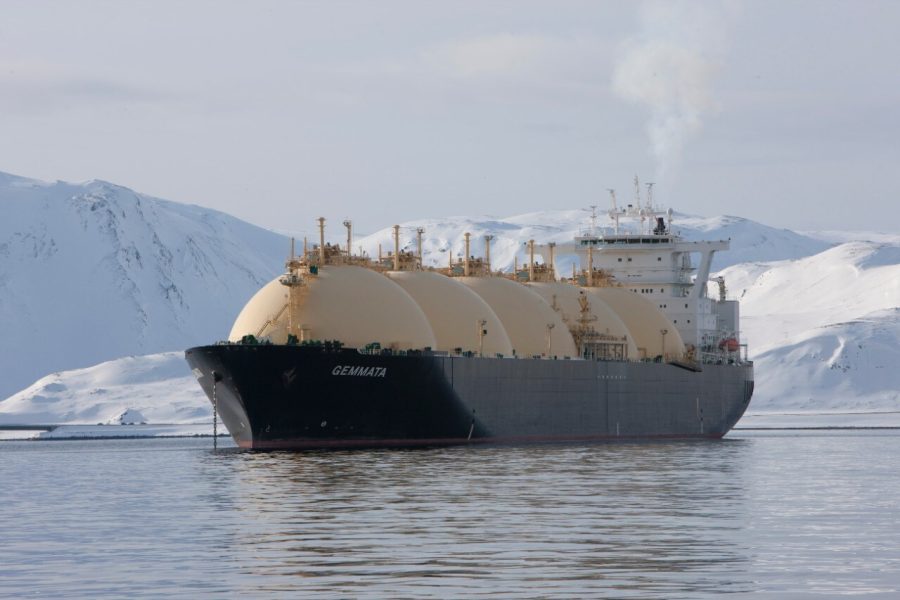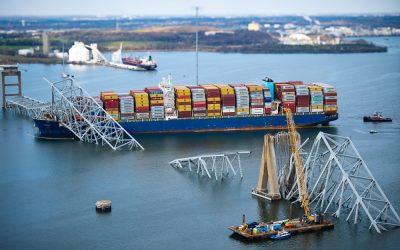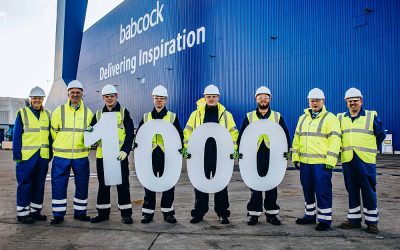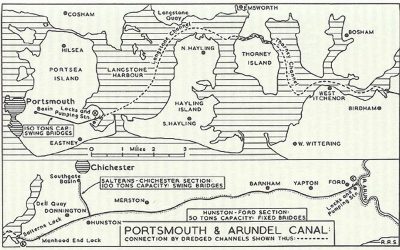Amy Parkes, University of Southampton and Arcsilea Ltd, and Przemyslaw Grudniewski, Theyr Ltd
Climate change is the challenge for our generation. Across all our transport sectors we are trying to understand how we can make immediate emissions reductions while generating affordable and effective long-term strategies. For its part, shipping has been pursuing energy efficiency with significant success, however the newly adopted IMO revised GHG strategy at MEPC 80 will require even more ambitious efficiency improvements. In the effort to reduce emissions, a number of companies are producing “green tech” or “smart shipping” approaches such a wind-assisted propulsion, air lubrication, voyage optimisation or weather routing, and vessel optimisation. Among the cheapest and least intrusive solutions are those based on using data to change the operation of a vessel; enabled by increasing levels of data collection and digitalisation in the shipping industry. Leveraging insights from this data allows immediate reductions to emissions and, in the longer term, will make more expensive zero-carbon fuels more palatable.
Two of these technologies are the Just Add Water System (JAWS), which predicts the optimum draft and trim of a vessel for any given speed, and the Theyr Voyage Optimisation Solution (T-VOS), which is a voyage optimisation software. We propose that the combination of these approaches can lead to emergent behaviour, producing larger savings than either one alone. A system which optimises both the voyage and the ship operation should allow better exploitation of the most efficient operating conditions, while not compromising the required voyage characteristics. For example, if different draught and trim are preferable in rough open ocean compared to shallow and calm straits, then the speed for these portions of the voyage can be optimised in combination with the draught and trim to reduce fuel consumption while maintaining the required ETA in port.
To test this hypothesis University of Southampton, Arcsilea, Shell, Theyr, and The Alan Turing Institute performed simulations to explore the potential for emergence and to show that substantial reductions in emissions are possible with immediate effect. An augmented JAWS is incorporated into T-VOS to allow it to optimise the ships draught and trim as well as other voyage parameters. The results are then tested on real routes performed by the ship, to calculate estimated improvements compared to a shortest path voyage.
JAWS
The Just Add Water System (JAWS) is a data model which uses historic high frequency vessel performance data to predict the optimum draft and trim of a vessel for any given speed. By selecting the optimum draft and trim on voyage, a vessel can use less fuel to move through the water, in turn reducing the emissions produced. The software was developed by Shell Shipping and Maritime Technology in collaboration with the University of Southampton. The software was built on the Shell’s large vessel data set acquired from over two thousand vessels operating on Shell business on any given day. Shell is rolling the software out across its Liquified Natural Gas (LNG) carrier fleet, with fuel and emissions savings of 5% on average achieved to date.
T-VOS
Voyage optimisation systems suggest routes which should require minimal fuel while still meeting voyage requirements such as ETA in port, safety requirements, and ship behaviour in emission control areas. They allow for just-in-time arrival of ships at ports, helping to reduce the large quantity of emissions produced while ships wait to load/unload. Voyage optimisation software has been recognised to cut emissions in the region of 5-10%.
T-VOS (Theyr – Voyage Optimisation Solution) is the first modular voyage optimisation engine developed by Theyr Ltd in collaboration with the University of Southampton. It results from a decade of fundamental research and development in artificial intelligence. The software combines the latest high-fidelity Met-Ocean forecast data (RDAS) with cutting-edge genetic algorithms to create the most efficient routes. Compared to existing solutions on the market, T-VOS provides an additional improvement of at least 5% in fuel and corresponding emissions savings, 7% in transit time savings, and more than 8% in savings for Time Charter Equivalent.
Integrating the technologies
To combine the two technologies, T-VOS must be able to ask JAWS for the optimal draft and trim and the resulting power requirement for any given speed throughout its own optimisation process.
The performance of JAWS hinges on the power prediction method it uses, it needs to accurately estimate power requirements of the ship in all vessel and weather conditions. In this study, a new machine learning methodology based on artificial neural networks which are biased to model the ground truth are used [1]. Artificial neural networks are data-driven modelling methods inspired by biological neural networks that can learn complicated multi-dimensional relationships. In this situation, the ground truth is defined as the underlying physical interactions between the ship and its environment.
Machine learning methods are constrained by underlying assumptions, meaning they are only valid for specific applications [2][3]. The power prediction needed for JAWS is one scenario which violates the assumptions. This means that using traditional machine learning, which is designed to reduce point-based error measures, could lead to a poor model of the ground truth. These constraining assumptions are often not acknowledged by recent applications across engineering, including many attempts to produce ship models.
The new approach used here, which biases the modelled input-output relationships towards the ground truth, reduces the constraints on the data. Therefore, producing more accurate relationships in a broader range of applications, which leads to power prediction that is more reliable than those from other neural networks methods. This improved approach in JAWS is given a ship speed and responds with an optimal draft, optimal trim, and the propulsion power required to maintain those conditions. This is then used inside the T-VOS optimisation, to optimise not only the voyage parameters but also the ships draft and trim.
The heart of T-VOS is the co-evolutionary Multi-Level Selection Genetic Algorithm (cMLSGA), which was specially designed for complex engineering and optimisation problems [4]. Genetic Algorithms are a popular optimisation method inspired by the Darwinian theory of evolution and processes of natural selection. They do not require historical voyage data to operate and are valued for their flexibility and high effectiveness across a wide range of complex problems. cMLSGA utilises multi-level selection as the inspiration to improve the performance of the algorithm, where the survival of individuals is dependent not only on their own abilities but also of the group they belong to, as seen in ant colonies, wolf packs and human societies. Using a multi-objective algorithm means it is possible to simultaneously take full advantage of state-of-the-art data-driven vessel performance models with multiple operational parameters, like JAWS, for more accurate fuel and carbon emission predictions and voyage planning. Therefore, operating parameters, such as draft and trim, can be optimised alongside the vessel’s speed before and during the voyage to reduce carbon emissions.
Testing for emergence
To define the potential savings achievable by a combination of JAWS and T-VOS, real data from an LNG carrier is used. Four distinct port-to-port voyages which the vessel performed between 2021 and 2022 are analysed. For each route the following scenarios are explored: if this ship is in ballast or laden condition; the type of power prediction module used inside JAWS; whether draft, trim or both are adjusted; how often they can be adjusted; and how much adjustment can be made.
The routes used are the following:
- Malabo (Equatorial Guinea) to Quintero (Chile) – South Atlantic route from 12-27 Feb 2022.
- Savannah (US) to Milford Haven (UK) – North Atlantic route from 19-26 Sept 2022.
- Nagoya (Japan) to Chincha Alta (Peru) – Pacific route from 11-30 March 2022.
- Singapore to Bonny (Nigeria) – Indian Ocean route from 8-26 March 2021.
The routes are based on the historical track of the vessel and were selected to ensure a diversity of locations and met-ocean conditions. During optimisation all potential voyage paths were bound by the same arrival and departure times which are specific to each port-to-port route. Which ensures fairness of comparison, where arrival time is based on the voyage time along the shortest path voyage. A shortest path voyage is defined as the shortest navigable route between both locations with constant speed along it. The speed was taken as the modal speed for the given loading condition, and the modal trim and draft settings were selected.
The optimisation for each scenario is performed five times in total to produce statistically significant results. For optimisation purposes, the vessel can change its course every 135nm and speed every 405nm. With chosen speeds, this leads to course adjustments every eight hours and every 24h for speed, on average. In scenarios with adjustment throughout the voyage, the trim and draft are altered simultaneously to speed. It is assumed that course, speed through water, trim, and draft remain constant between those changes. The resulting comparative savings are calculated against the predicted fuel consumption along the shortest path voyage.
Estimating potential savings
Benchmarking of the power prediction module clearly illustrates that using a higher fidelity model increases the possible fuel saving of the technology, Figure 1. The resulting savings are from an average across all four routes, assuming 50% time in ballast and 50% time laden. For these simulations it is assumed that draught and trim are only adjusted at the beginning of each voyage, to keep in line with current JAWS practice. Error bars indicate the range of expected savings from different routes. The Townsin and Kwon empirical method for increase in power in weather [5], and the extended version of it, called SFOC model, where the SFOC and baseline power curves have been adjusted for the selected vessel based on the real operational data instead of utilising generic curves for the class of the vessel.
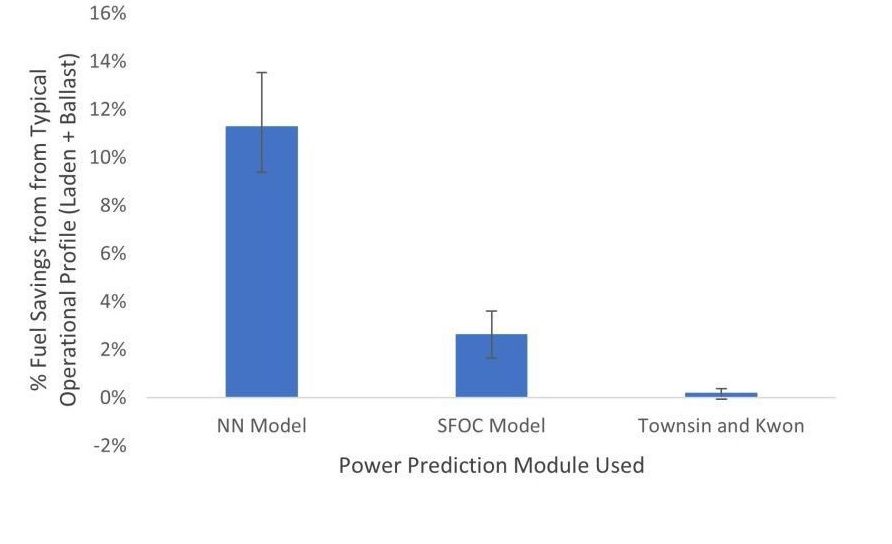
Figure 1. Fuel savings from T-VOS+JAWS when different power prediction modules are used
The current JAWS system reduces fuel consumption by 5% across all operating conditions [6], whereas savings of over 11% are estimated when using the neural network module. JAWS is not compared directly in Figure 1, as the routes used to verify JAWS savings are more varied than those used in this study. In the following analysis the neural network module is used in JAWS to illustrate the potential savings using a module which is biased towards the ground truth.

Figure 2. Fuel savings from T-VOS+JAWS, for different adjustment frequencies to illustrate the difference between ballast and laden savings. Vary during voyage refers to adjusting trim at most every 18 hours
As the frequency of draught and trim adjustment is increase, the potential savings from the T-VOS and JAWS combination is increased, Figure 2. In laden conditions T-VOS is allowed to change the speed between the ranges of 17-19knots, whereas a range of 15-18knots is allowed for ballast conditions. The results show that for this LNG carrier, notably larger savings can be found while the ship is in ballast, Figure 2. This is believed to be due to the increased allowed speed range in ballast compared to laden but could also be an increased sensitivity to trim in the ballast draught ranges.
Although the predicted savings in the ballast condition are much larger than the laden fuel savings, they do not increase as much with increasing adjustment frequency. Moving from no adjustment (static draught and trim) to varying at most every 18 hours more than doubles the savings while laden, whereas the ballast savings are increased by only 15%. This could indicate that the ballast search space is less dynamic than the laden, and therefore less adjustment is required to find the best savings. It also suggests that a plateau of improvements have been reached, and savings of much more than 20% should not be expected to be found with increasing adjustment frequency.
Illustrating emergence
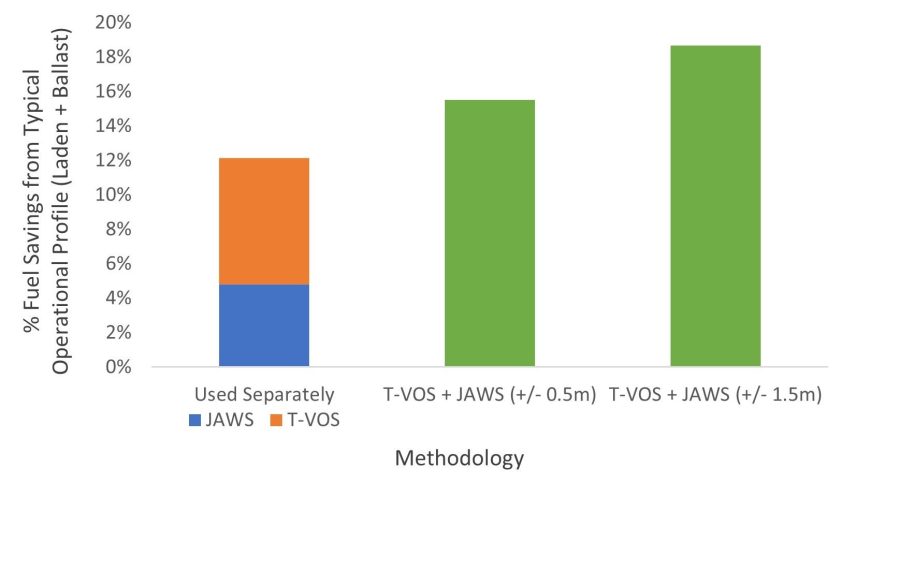
Figure 3. Comparing fuel savings from using T-VOS and JAWS separately on the same vessel, to the results of the study combining the two green tech systems. Adjustments are assumed to be at most every 18 hours
The savings from using JAWS and T-VOS independently on the same vessel can be compared to the savings from this study to assess the potential for emergent behaviour, Figure 3. The savings for using both technologies separately is 12% on average, as the combination of 5% savings from JAWS and 7.5% from T-VOS and due to the phenomenon of diminishing returns. Using both technologies together with draught and trim adjustments of +/- 0.5m increases the fuel saving by 3.4% and increasing the adjustment size to +/- 1.5m adds a further 3.1% savings. This results in a total expected savings of 18.6%.
This is evidence of potential emergent behaviour between vessel optimisation and voyage optimisation technologies. Savings of 18.6% are made by allowing the two technologies to work together, compared to 12% from them working independently, this is an increase of x1.5. As the size of the green technology industry inside and outside of maritime is expanding, more research is required in the area of emergent behaviour. Integrating other existing smart shipping technologies such as wind-assisted propulsion with weather routing or voyage optimisation, or air lubrication with vessel optimisation such as JAWS, is a cheap and non-intrusive way to help meet the 2030 emissions targets and reduce the cost barrier to expensive net-zero fuels beyond this.
Acknowledgements
The authors would like to acknowledge the following fellow contributors to this research and article: Adam Sobey, University of Southampton, The Alan Turing Institute and Theyr Ltd; James Helliwell, Shell; Dominic Hudson, University of Southampton; and David Young, Theyr Ltd.
References
[1] – Parkes, A. I., Sobey, A. J. and Hudson, D. A., (2021) “Towards error measures which influence a learners inductive bias to the ground truth” https://arxiv.org/abs/2105.01567
[2] – Bishop, C. (1995) “Neural Networks for Pattern Recognition” Oxford University Press. chap. 6, pp. 194–225
[3] – Jensen, J. (1906) “Sur les fonctions convexes et les inégalités entre les valeurs moyennes”. Acta Math. 30, pp. 175–193
[4] – Grudniewski, P.A. and Sobey, A. J., (2023) “Coevolutionary strategies at the collective level for improved generalism” Data-Centric Engineering, vol. 4, pp. e6
[5] – Townsin, R. L., Kwon, Y. J., Baree, M. S. and Kim, D. Y. (1993) “Estimating the influence of weather on ship performance” Transaction of the Royal Institution of Naval Architects, vol. 135, pp. 191-209
[6] – Media article “Shell commits to five-year JAWS / K-IMS contracts following successful tests” https://www.kongsberg.com/maritime/about-us/news-and-media/news-archive/2022/shell-commits-to-five-year-jaws–k-ims-contracts/
